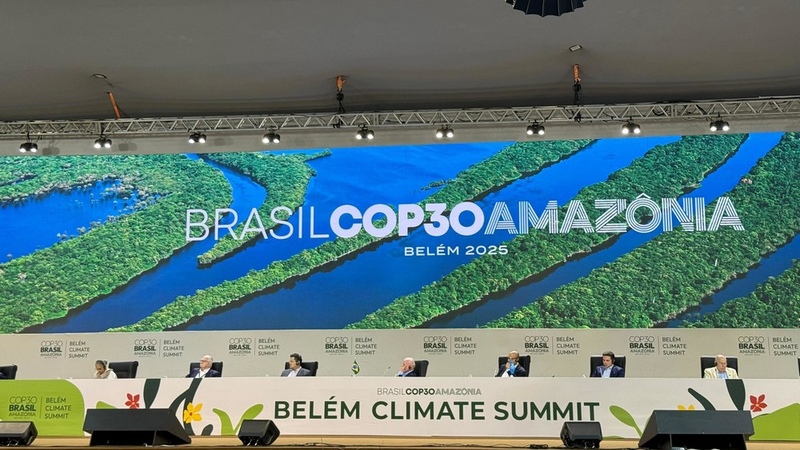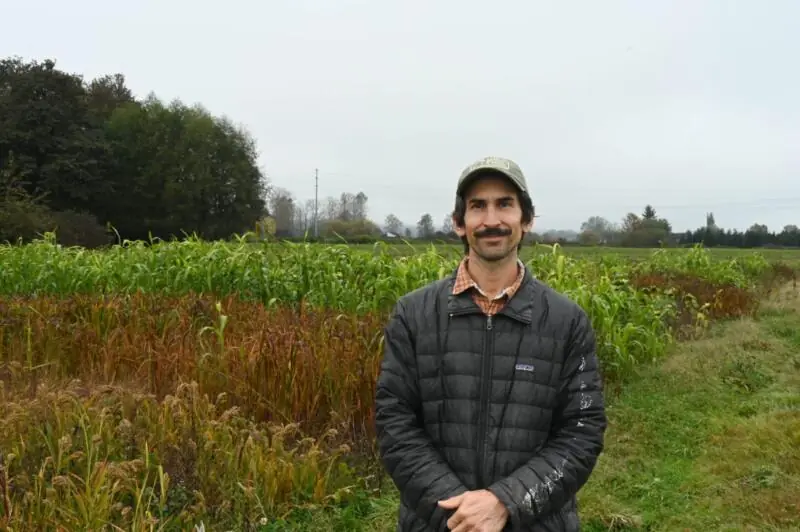Deputy Chairman of Cabinet calls for priority financing of mountain ecosystems COP30 – AKIpress News Agency

Report on Kyrgyzstan’s Address at the Pre-COP30 Climate Summit
Executive Summary
This report details the address delivered by Edil Baisalov, Deputy Chairman of the Cabinet of Kyrgyzstan, at the Climate Summit in Belém, Brazil, held in preparation for the 30th Conference of the Parties (COP30). The central theme of the address was an urgent call for prioritized international financing for the protection of mountain ecosystems. This initiative directly aligns with and seeks to advance several key United Nations Sustainable Development Goals (SDGs), particularly those concerning climate action, biodiversity, and global partnerships.
Key Address Points and Linkage to SDGs
The speech underscored the critical intersection of climate change and sustainable development, with a specific focus on the vulnerabilities of mountainous regions. The primary points are intrinsically linked to the 2030 Agenda for Sustainable Development:
- Urgent Climate Financing: The core message was a demand for dedicated financial mechanisms to support mountain nations. This directly supports SDG 13 (Climate Action) by calling for the mobilization of resources to enhance adaptive capacity and resilience to climate-related hazards.
- Protecting Vital Ecosystems: The emphasis on mountain ecosystems highlights their crucial role in global environmental health, aligning with SDG 15 (Life on Land) and SDG 6 (Clean Water and Sanitation), as these regions are primary sources of freshwater and hubs of biodiversity.
- International Cooperation: The appeal for funding is a call to strengthen global partnerships, a cornerstone of SDG 17 (Partnerships for the Goals), to ensure that developing and climate-vulnerable nations have the means to implement sustainable policies.
Focus on Mountain Ecosystems: Advancing SDG 15 and SDG 6
The address positioned mountain ecosystems as a global priority, essential for achieving specific sustainable development targets. The rationale for this focus includes:
- Biodiversity Hotspots (SDG 15): Mountain regions host a significant portion of the world’s terrestrial biodiversity. Financing their conservation is crucial to halt biodiversity loss and protect threatened species.
- Water Towers of the World (SDG 6): These ecosystems are vital for the provision of freshwater to downstream populations. Protecting them from the impacts of climate change, such as glacial melt, is essential for water security and sanitation for millions.
- Combating Land Degradation (SDG 15): Investment is needed to prevent and reverse land degradation and desertification in fragile mountain environments, thereby protecting livelihoods and ecosystem services.
Call to Action for Global Partnership and Climate Justice (SDG 17 & SDG 13)
The Deputy Chairman’s speech serves as a formal call to action for the international community in the lead-up to COP30. It advocates for a more equitable and targeted approach to climate finance that recognizes the unique challenges faced by mountain nations. This call for enhanced partnership under SDG 17 is framed as a matter of climate justice, ensuring that those most affected by climate change, yet least responsible for it, receive the necessary support to build a resilient and sustainable future in line with SDG 13.
Analysis of Sustainable Development Goals in the Article
1. Which SDGs are addressed or connected to the issues highlighted in the article?
-
SDG 13: Climate Action
- The article explicitly mentions the “Climate Summit” and the “30th Conference of the Parties to the UN Framework Convention on Climate Change (COP30).” These are the primary international forums for addressing climate change, directly linking the article’s subject matter to SDG 13, which urges immediate action to combat climate change and its impacts.
-
SDG 15: Life on Land
- The central theme of the speech mentioned in the headline is the call for “priority financing of mountain ecosystems.” SDG 15 focuses on protecting, restoring, and promoting the sustainable use of terrestrial ecosystems. The specific mention of mountain ecosystems directly connects the article to this goal.
-
SDG 17: Partnerships for the Goals
- The call for “financing” within an international context like COP30 highlights the need for global partnerships and mobilized financial resources to achieve sustainability objectives. This aligns with SDG 17, which emphasizes the importance of international cooperation and financial support, particularly for developing countries, to implement the SDGs.
2. What specific targets under those SDGs can be identified based on the article’s content?
-
Target 13.a (under SDG 13)
- This target focuses on implementing the commitment by developed countries to mobilize finance for climate action in developing countries. The Vice Prime Minister’s call for “priority financing” at a climate summit is a direct appeal for the fulfillment of this target, seeking financial resources to address climate-related challenges in mountain regions.
-
Target 15.4 (under SDG 15)
- This target aims to “ensure the conservation of mountain ecosystems, including their biodiversity” by 2030. The article’s core message, the call to finance the protection of “mountain ecosystems,” is a direct match with the objective of this target.
-
Target 17.3 (under SDG 17)
- This target calls to “mobilize additional financial resources for developing countries from multiple sources.” The appeal for “priority financing” at an international conference is an effort to mobilize such resources from the global community to support sustainable development initiatives, in this case, the protection of mountain ecosystems.
3. Are there any indicators mentioned or implied in the article that can be used to measure progress towards the identified targets?
- The article does not mention any specific quantitative indicators or data points. However, it strongly implies a key indicator for measuring progress:
-
Financial Flows for Climate and Ecosystems: The central theme of “priority financing” implies that the amount of financial resources mobilized and directed towards the conservation of mountain ecosystems and climate action is the primary metric of concern. This aligns with official indicators such as:
- Indicator 13.a.1: “Amounts provided and mobilized in United States dollars per year in relation to the continued existing collective mobilization goal of the $100 billion commitment through to 2025.”
- Indicator 17.3.1: “Additional financial resources mobilized for developing countries from multiple sources.”
While the article does not provide a value for this indicator, it frames the entire discussion around the need to increase it, making it the central, implied measure of success.
4. Summary Table of SDGs, Targets, and Indicators
| SDGs | Targets | Indicators |
|---|---|---|
| SDG 13: Climate Action Take urgent action to combat climate change and its impacts. |
Target 13.a: Implement the commitment undertaken by developed-country parties to the United Nations Framework Convention on Climate Change to a goal of mobilizing jointly $100 billion annually by 2020 from all sources to address the needs of developing countries… | Implied Indicator: Financial commitments and disbursements for climate action. (Corresponds to official indicator 13.a.1) |
| SDG 15: Life on Land Protect, restore and promote sustainable use of terrestrial ecosystems, sustainably manage forests, combat desertification, and halt and reverse land degradation and halt biodiversity loss. |
Target 15.4: By 2030, ensure the conservation of mountain ecosystems, including their biodiversity, in order to enhance their capacity to provide benefits that are essential for sustainable development. | Implied Indicator: Amount of financing allocated to the conservation of mountain ecosystems. |
| SDG 17: Partnerships for the Goals Strengthen the means of implementation and revitalize the Global Partnership for Sustainable Development. |
Target 17.3: Mobilize additional financial resources for developing countries from multiple sources. | Implied Indicator: Mobilization of financial resources from international sources for environmental protection. (Corresponds to official indicator 17.3.1) |
Source: akipress.com
What is Your Reaction?
 Like
0
Like
0
 Dislike
0
Dislike
0
 Love
0
Love
0
 Funny
0
Funny
0
 Angry
0
Angry
0
 Sad
0
Sad
0
 Wow
0
Wow
0















































/environment-climate-change-and-health-(ech)/water-sanitation-hygiene-and-health-(wsh)/landfill-tuvalu-36092.tmb-1200v.jpg?sfvrsn=5c21fe40_1#)


.jpg.webp?itok=0ZsAnae9#)

























